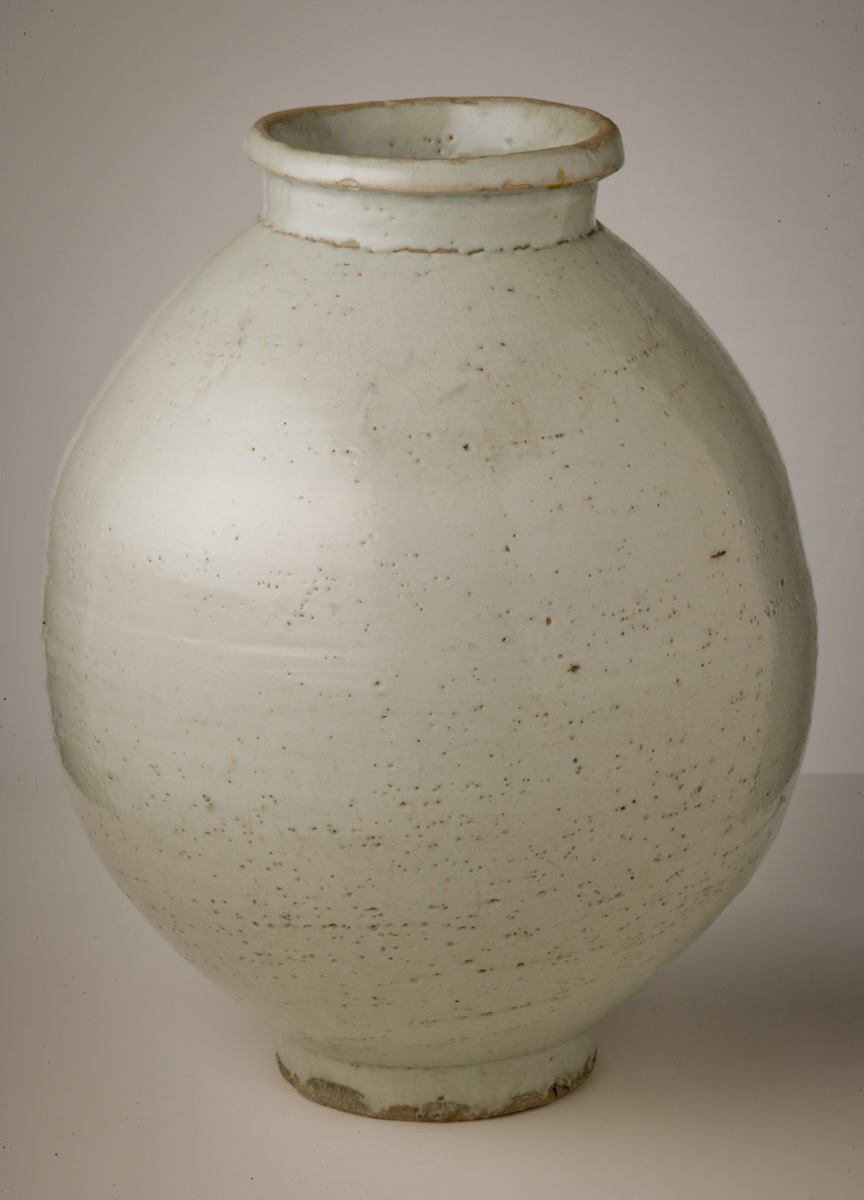December 16, 2015 - April 3, 2016
Japanese Gallery
Above: Korean, Moon Jar, 18th century, Choson dynasty (1392-1910), Porcelain with opaque off-white glaze, Gift of Claude Lee in memory of Agnes Elizabeth Scribner, 2012.17
In 1927 the first Korean work of art entered the Worcester Art Museum's permanent collection and since then the museum's focus on Korean art has been steadily growing. The current installation features two of the museum's more recent acquisitions of Korean art—the magnificent early nineteenth-century eight-panel Grapevine Screen by Choe Sokhwan and the eighteenth-century Joseon Moon Jar.
Both exemplify contrasting qualities of the scholar ideal in late imperial Korea. The even, milky white glaze of the Moon Jar represents the Confucian scholar's taste for simplicity and purity that favored undecorated white wares, while Choe Sokhwan's Grapevine screen painting of a dynamic grapevine over eight panels embodies the power of the individual artist's spirit via the brush. The slightly uneven form of the Moon Jar and the unrestrained vigor of the Grapevine reveal the appreciation for naturalness and spontaneity in Korean art.


 Sign up for WAM eNews
Sign up for WAM eNews